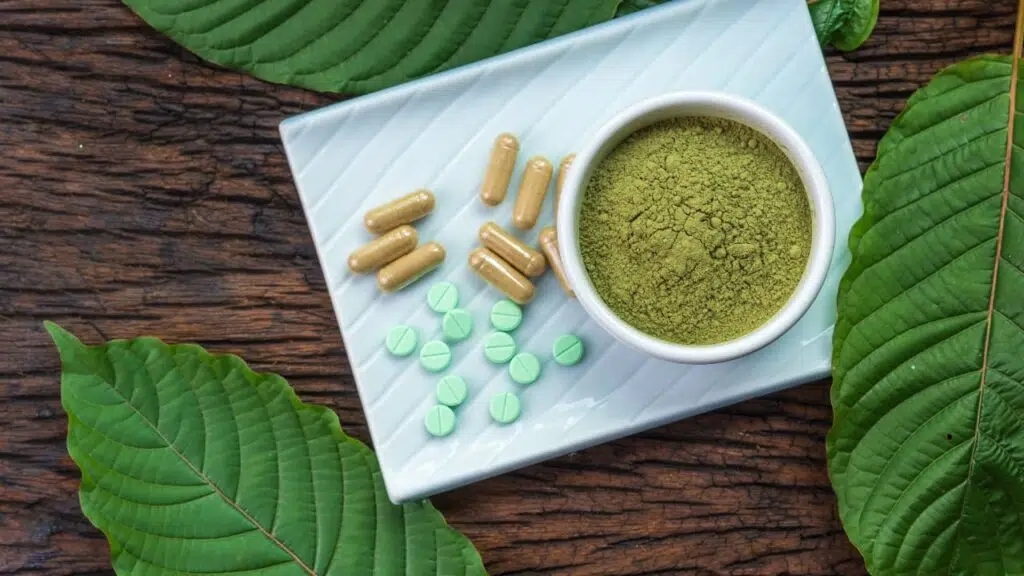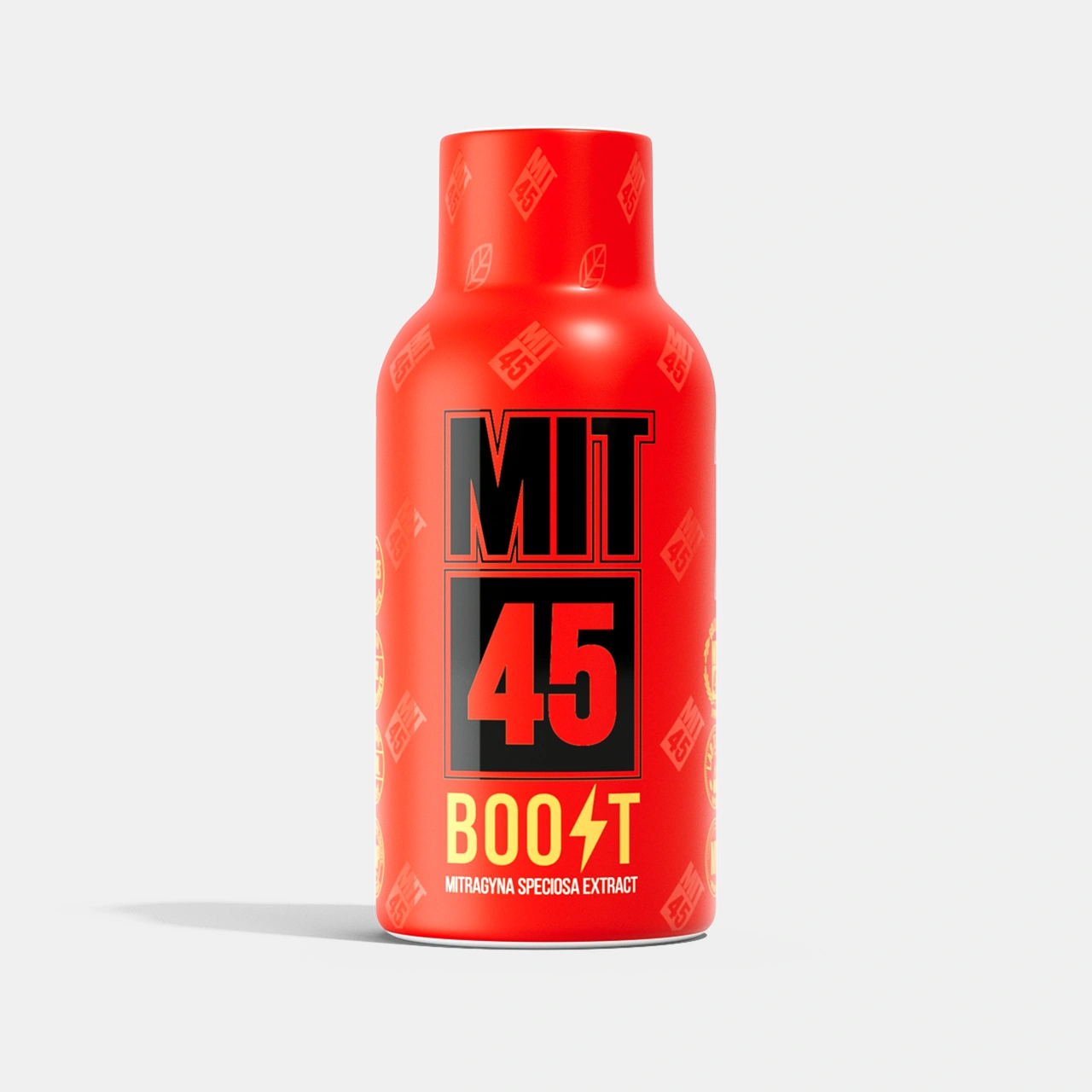If you’ve ever visited a kava bar, smoke shop, or searched for natural products in a health store or even a convenience store, chances are that you’ve noticed multiple kratom products on the shelves.
Kratom is a natural product with potential benefits and many uses for people, and may provide nature’s cheat code to living your life with a renewed sense of health. However, it’s vital that you understand the potential results of using kratom before you purchase any kratom products.
It’s important to use kratom responsibly and to understand what kratom is, what it’s often used for, how to distinguish different kratom strains, and the variety of kratom product types.
By making an informed decision, you may find yourself incorporating this octane for the soul into your daily routine. Let’s take a look at a beginner’s guide to the world of kratom so that you can begin your journey today.
- The history of kratom
- Potential uses of kratom
- The different kratom strains and veins
- Types of popular kratom products
- How to find quality kratom products
- Tips for beginners
- Connect with MIT45
- Additional References
The history of kratom
Native to Southeast Asia, kratom (which is also known by its botanical name Mitragyna speciosa) is a tropical tree used for centuries by native cultures for a variety of purposes. Kratom leaves are the main ingredient in kratom products available for purchase.
Kratom trees are part of the coffee family and may have similar enhancing properties as their caffeinated counterparts. You can even take kratom with coffee to increase energizing feelings.
Historically, natives dried kratom leaves and then brewed them into teas, chewed the leaves, or smoked them to experience both soothing and energizing benefits. Today, the leaves go through an extraction process to create a kratom concentrate used to create kratom products.
What in the world is mitragynine?
When you read kratom product labels or research the effects of kratom, you may come across frequent mentions of mitragynine. Mitragynine is an alkaloid that interacts with your body’s natural opioid receptors. These receptors can directly relate to feelings of pleasure and pain relief.
How long has kratom been in the U.S.?
Reportedly, kratom first became available in the U.S. in the late 1990s. However, it may have been introduced to U.S. soldiers in the Vietnam War, who brought kratom back to the states with them as well.
Kratom’s rise to popularity has mostly occurred within the last decade. Although kratom isn’t available in every state, it has become popular in many areas and some kratom products can be found in chain store locations, such as 7-Eleven and Circle K.
What type of research has been done about kratom’s effects?
In the U.S. alone, thorough and extensive kratom research is ongoing. The FDA, various states’ Department of Agriculture research scientists, and NIH (National Institutes of Health) are among the many premier facilities studying the potential benefits and effects of kratom.
Leading kratom vendors, such as MIT45 and Golden Monk, also conduct significant, third-party lab testing of each of their products.
Potential uses of kratom
In Southeast Asia, kratom is used for possible uplifting and calming effects, and often incorporated into social and religious cultural ceremonies. Every user is different, and kratom may have various effects on different bodies.
When taken in suggested serving sizes from reputable vendors, kratom may be used for the following possible benefits:
- Soothing or calming effects
- Relaxation
- Uplifting or energizing benefits
- To help add an oomph to daily activities
The different kratom strains and veins
Different kratom leaves contain unique qualities based on the different veins and individual strains of kratom that are used. The three main strains of kratom include red vein kratom, green vein kratom, and white vein kratom, although yellow vein products are becoming more readily available, too.
The distinction between strains and veins
Although the phrases kratom strains and veins are often used interchangeably, strain refers to the type of kratom and veins are used to signify the color of the leaf vein at the time of harvest. For example, Green Thai kratom and Red Thai kratom come from the same cultivar type, but the green kratom is harvested earlier in the leaf’s growth cycle than the red variety.
Kratom vein features
Some of the identifying features of different kratom veins include:
- Red Vein:
Higher concentration of kratom’s secondary alkaloids. This results in more soothing effects and is why red vein kratom is sometimes known as a stronger type of kratom It’s also harvested at the end of a leaf’s growth cycle. .
- Green Vein:
Lower concentration of secondary alkaloids. Thought to produce balanced effects between energizing and soothing benefits. Veins take on a green color.
- White Vein:
White vein kratom strains often contain high levels of the alkaloid mitragynine, which may lead to uplifting benefits. These young leaf veins still have their white color.
Other kratom strains
When you’re researching kratom products, you may also notice that many strains are named for certain regions. These names come from where that type of kratom was originally cultivated, before being transplanted to commercial kratom farms. Today, nearly all commercially available kratom is grown in the same region of West Kalimantan.
Some of the most popular kratom strains named for regions include:
- Red Bali
- White Thai
- Green Malay
Types of popular kratom products
Kratom is available in many different forms—from tablets to to-go packs. Powders, liquids, gummies, and capsules are among the most popular products and are considered some of the easiest ways to consume kratom.
Let’s take a closer look at some of the most popular forms of kratom.
Kratom powders
The leaves of a kratom tree are picked, dried, and then crushed into powder form to create popular kratom powder products. Again, the vein of the powder depends on the stage of growth in which the leaves were picked.
Some vendors may include additives to their kratom powders, so it’s important to research the powder and to read the product label before you make your purchase. Suggested serving sizes might not be included by every kratom brand, but it’s a good idea to start out with a small serving size.
Raw leaf labels may point to pure kratom products that contain no additives.
Kratom liquid extracts
Kratom liquid extracts, such as MIT45 BOOST, are made from kratom leaves via a thorough extraction process that isolates mitragynine and other alkaloids from raw kratom leaves. This allows manufacturers to create a concentrated liquid form of kratom.
Typically, one kratom liquid extract product contains more than one serving size, so it’s vital to read the label before you take kratom liquids. Although some kratom liquid products can be taken as they are, you may also find they’re great when mixed with another beverage, such as water, orange juice, or coffee.
Kratom teas
Kratom teas are popular in Southeast Asia and are created by mixing raw leaf powder. Kratom tea products can be packaged as tea bags or may be packaged as loose tea. You can also add a couple drops of kratom liquid extract to a cup of simmering water to make your own tea. Either way, feel free to add sweeteners to suit your personal taste.
Capsules
Kratom capsules provide one of the most convenient forms of kratom and can be a great way to take kratom on-the-go with you. Capsules are a great option for beginners — if you decide to purchase kratom capsules, your serving size will remain consistent, and capsules don’t have the distinctive taste you may find with other forms of kratom.
However, kratom capsules and tablets aren’t interchangeable. Capsules use a thin layer of casing such as gelatin or cellulose, and tablets are formed through a binding agent like starch or sucrose.
How to find quality kratom products
Although there are numerous credible kratom vendors, like MIT45 and Golden Monk, you may find a lot of low-quality kratom products on the market, too. Thus, it’s important to research brands and their products, and know what to look for when making a purchase.
Labels and safety measures
Some vendors may add unnecessary additives to their products that could change the impact of the kratom. However, reputable vendors provide product labeling, employ thorough, third-party testing measures, prioritize safe use, and sell pure kratom products.
AKA Qualified Vendors
The American Kratom Association (AKA) exists to support kratom users, educate the public on kratom use, and raise global awareness on kratom. The AKA fiercely advocates for transparency, truth, and credibility in kratom products.
The group’s vetted, curated list of kratom vendors called the Good Manufacturing Practices (GMP) Qualified Vendors include trusted brands that adhere to truth and high standards in kratom manufacturing.
MIT45 appears on the AKA GMP Qualified Vendors list, and along with thorough research and third-party testing of MIT45 kratom products, we take pride in raising the bar on kratom safety standards. Each of our products also undergoes a rigorous Triple Purification Process.
Tips for beginners
If you want to take the first step to incorporate kratom use in your daily life, it’s important to remember that a little kratom goes a long way. If the product you choose includes a suggested serving size, it’s wise to take that consistently until you discern how your body reacts. You can then increase your serving size incrementally to achieve the desired effect.
Research the kratom products you’re interested in before you make your first purchase, and remember to read the label to determine the strength of the product. You can also find answers to many common kratom questions on the MIT45 FAQ page.
It may be wise to also consult a medical or holistic health practitioner before you take kratom to understand how it might impact you or interact with any pre-existing conditions you may have or medications you may be taking.
Connect with MIT45
MIT45 is committed to the highest standards and industry leadership in kratom products. Now that you understand what kratom is, what it might be used for, the differences between kratom strains and veins, and popular types of products, you can make an informed decision as you take the next step.
You can shop for kratom products via our online store, and be sure to check out our blog for the latest insights and tips on kratom use.
Additional References
Ashton L. Types of Kratom Strains: The Best of Red, Green & White Vein. Cfah.org. Published January 2023.
Baum I. The Dangers of Using Kratom Tea To Treat Anxiety or Opiate Withdrawal. Health.com. Published January 2023.
Cinosi E, Martinotti G, Simonato P, Singh D, Demetrovics Z, et al. Following “the Roots” of Kratom (Mitraguna speciosa): The Evolution of an Enhancer from a Traditional Use to Increase Work and Productivity in Southeast Asia to Recreational Psychoactive Drug in Western Countries. Biomed Res Int. 2015;2015:968786.
Johns Hopkins Medicine. Natural Herb Kratom May Have Therapeutic Effects And Relatively Low Potential For Abuse Or Harm, According To A User Survey. Hopkinsmedicine.org. Published February 2020.
Karunakaran T, Ngew KZ, Zailan AAD, John VYM, Bakar MHA. The Chemical and Pharmacological Properties of Mitragynine and Its Diastereomers: An Insight Review. Front Pharmacol. 2022;13:805986
National Library of Medicine. OPRM1 gene (opioid receptor mu 1). Medlineplus.gov. Accessed 2023.
Ramanathan S, McCurdy CR. Kratom (Mitragyna speciosa): worldwide issues. Curr Opin Psychiatry. 2020;33(4):312-318.
Stevens CJ. Kratom: Is It Safe? Healthline.com. Published June 2020








